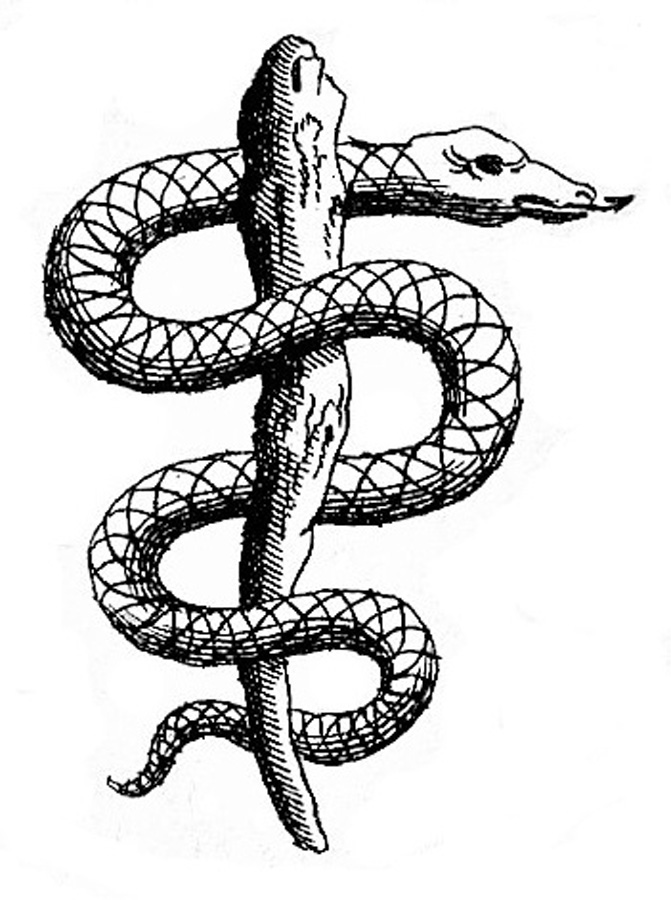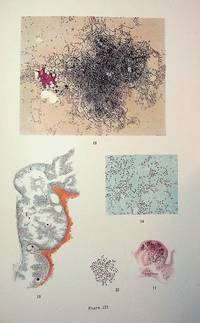full leather binding
1673 · Leyden
by Bartholin, Thomas
Leyden: Ex Officina Hackiana, 1673.
OVER 100 DRAMATIC 17TH CENTURY ENGRAVINGS ILLUSTRATE ANATOMIC DISCOVERIES OF EMINENT DANISH FAMILY OF PHYSICIANS.
11.5x19 cm hardcover, full leather binding, rebacked with matching leather spine with raised bands, gilt title to red leather label, [28], 807 pp, [16], 108 engraved plates (11 folding). Lacking 2 leaves (pp 11/12 and 179/180, inserted in facsimile), bottom of 2 folding plates cut by binder (p 206, vas deferens, and p 748, skeleton). Covers worn, browning to page edges, binding tight, text and plates unmarked with strong impressions. A good+ copy of a major 17th century anatomist's work and its relationship to that of his predecessors. Of particular note, the first image shown here, Plate XVIII reveals lymph nodes ("b"), lacteals ("c"), draining to thoracic duct ("d"); in the second image, Plate XVII, Fig. I depicts lymph node ("f") and pancreatic lacteals ("i"), Fig. II shows lacteals in the neck.
THOMAS BARTHOLIN (1616 – 1680) was a Danish physician, mathematician, and theologian. He discovered the lymphatic system in humans and advanced the theory of refrigeration anesthesia, being the first to describe it scientifically. Thomas Bartholin came from a family that has become famous for its pioneering scientists, twelve of whom became professors at the University of Copenhagen. Three generations of the Bartholin family made significant contributions to anatomical science and medicine in the 17th and 18th centuries: Thomas Bartholin's father, Caspar Bartholin the Elder (1585–1629), his brother Rasmus Bartholin (1625–1698), and his son Caspar Bartholin the Younger (1655–1738). Bartholin the Elder published the first collected anatomical work in 1611. This work was later augmented, illustrated and revised by Thomas Bartholin, becoming the standard reference on anatomy; the son notably added updates on William Harvey's theory of blood circulation and on the lymphatic system. The volume offered here includes all three of these major contributions, illustrated with over 100 dramatic copper engravings. (Inventory #: 1688)
OVER 100 DRAMATIC 17TH CENTURY ENGRAVINGS ILLUSTRATE ANATOMIC DISCOVERIES OF EMINENT DANISH FAMILY OF PHYSICIANS.
11.5x19 cm hardcover, full leather binding, rebacked with matching leather spine with raised bands, gilt title to red leather label, [28], 807 pp, [16], 108 engraved plates (11 folding). Lacking 2 leaves (pp 11/12 and 179/180, inserted in facsimile), bottom of 2 folding plates cut by binder (p 206, vas deferens, and p 748, skeleton). Covers worn, browning to page edges, binding tight, text and plates unmarked with strong impressions. A good+ copy of a major 17th century anatomist's work and its relationship to that of his predecessors. Of particular note, the first image shown here, Plate XVIII reveals lymph nodes ("b"), lacteals ("c"), draining to thoracic duct ("d"); in the second image, Plate XVII, Fig. I depicts lymph node ("f") and pancreatic lacteals ("i"), Fig. II shows lacteals in the neck.
THOMAS BARTHOLIN (1616 – 1680) was a Danish physician, mathematician, and theologian. He discovered the lymphatic system in humans and advanced the theory of refrigeration anesthesia, being the first to describe it scientifically. Thomas Bartholin came from a family that has become famous for its pioneering scientists, twelve of whom became professors at the University of Copenhagen. Three generations of the Bartholin family made significant contributions to anatomical science and medicine in the 17th and 18th centuries: Thomas Bartholin's father, Caspar Bartholin the Elder (1585–1629), his brother Rasmus Bartholin (1625–1698), and his son Caspar Bartholin the Younger (1655–1738). Bartholin the Elder published the first collected anatomical work in 1611. This work was later augmented, illustrated and revised by Thomas Bartholin, becoming the standard reference on anatomy; the son notably added updates on William Harvey's theory of blood circulation and on the lymphatic system. The volume offered here includes all three of these major contributions, illustrated with over 100 dramatic copper engravings. (Inventory #: 1688)















